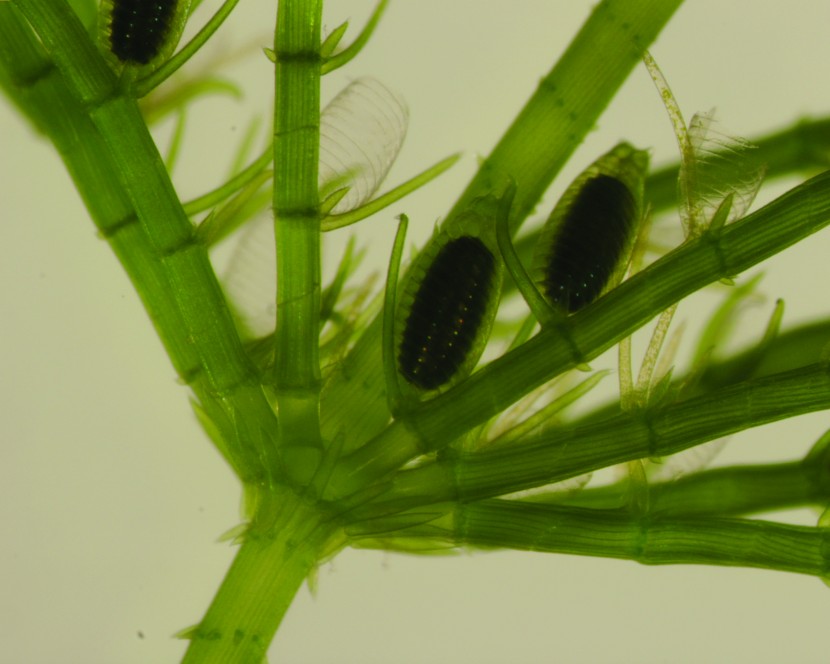The details of green algae are barely visible to the naked eye—most are much smaller than a grain of sand—but their beauty is revealed under the microscope. The research of Richard McCourt, a professor in Drexel’s Department of Biodiversity, Earth and Environmental Science (BEES) and John Hall, a postdoctoral research associate at the Academy of Natural Sciences of Drexel University, is aimed at understanding the evolutionary relationships of these green algae and how they are related to land plants, of which they are close relatives. McCourt and Hall sequence DNA from these algae to reconstruct the evolutionary tree of green plants. The name of their project, GrAToL, is an acronym for Green Algal Tree of Life — a five-institution grant funded by the National Science Foundation.
PHOTO 1: COSMARIUM
Conjugating green alga (Charophyta)
Cosmarium is a genus in a diverse group of green algae called desmids. Thousands of species thrive in freshwater habitats worldwide.
PHOTO 2: CHARA
Stonewort (Charophyta)
Chara is a branched green alga, growing as tall as a half meter. The dark, oblong structures are the fertilized eggs of the plant, which will be shed and germinate into new plants.
PHOTO 3: MICRASTERIAS
Conjugating green alga (Charophyta)
This desmid is a single cell with deeply dissected lobes. Species in the genus Micrasterias have been used in studies of cellular development—a process called morphogenesis.




